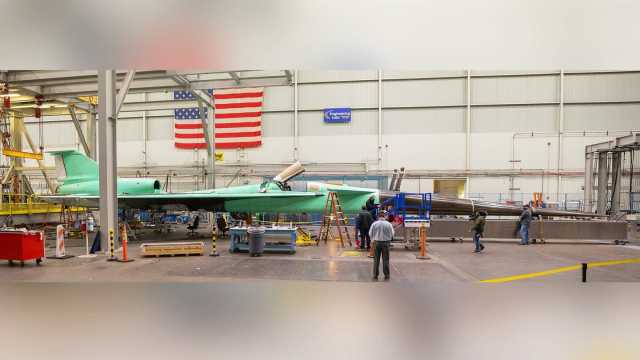Photos of the assembled X-59 QueSST aircraft were posted online. It was developed by Lockheed Martin Corporation in the interests of NASA.
Lockheed Martin is close to completing work on the X-59 QueSST, an experimental supersonic aircraft for NASA's Low-Boom Flight Demonstrator program.
As you can see in the new pictures, the plane has already received its giant nose. The fancy appearance should reduce the noise level of the X-59 and open the way to commercial operation of supersonic airliners.
Under Pressure?How much stress is too much? We're at the Lockheed Martin test facility in Texas where the X-59 is undergoing structural stress tests to make sure the plane structure won’t break apart in flight when exposed to stresses.? @LockheedMartin https://t.co/Abgl7hxIIR pic.twitter.com/Wa1K2SRxVa
- NASA Aeronautics (@NASAaero) February 11, 2022
Preliminary design of the X-59 began in 2016. He can make his first flight this year. QueSST will fly at a speed of more than 1,500 kilometers per hour at an altitude of approximately 16,800 meters. The tests will assess the acceptability of supersonic transport.
The cockpit, ejection seat and lantern for the QueSST were taken from the T-38 training aircraft. The chassis is borrowed from the F-16 fighter. The basis of the power plant is the General Electric F414 engine.
Recall that last year Aerion, which developed the supersonic civil aircraft AS2, announced its closure due to lack of funding.


